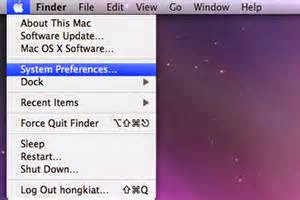 To start out your new year I thought I'd remind you of (or, possible
reveal, if this is new to you) a handful of menu bar tricks that you'll
find helpful. Let’s start with rearranging icons.
To start out your new year I thought I'd remind you of (or, possible
reveal, if this is new to you) a handful of menu bar tricks that you'll
find helpful. Let’s start with rearranging icons.If you don’t care for the way icons are arranged in the menu bar—you want the clock to appear all the way to the left, for example—just hold down the Command key and drag the item in question to a new position. Be careful to not drag it outside the menu bar, however, as doing so can cause it to evaporate. This trick doesn’t work with the Spotlight or Notification menus.
Speaking of the Notification menu, when you hold down the Option key and click on the menu, you immediately switch on the Do Not Disturb feature. You can toggle it off again by holding down the Option key and clicking on the menu.
The Option key is also helpful when using the Sound menu. When you click on this menu without holding down Option, you find a volume control. But hold down Option and all your audio input and output devices appear. I use this all the time when I want to quickly switch from my desktop speakers—attached, in this case, to an AudioQuest DragonFly USB audio interface—to the headphones jacked into my Focusrite Scarlett audio interface.
You’ll also find the Option key useful with the Wi-Fi menu. Without Option held down you see something like this—a list of local Wi-Fi networks. But if you hold down the Option key and click the menu you learn some important things about your network (some of which I’ve obscured for my protection). You also have easier access to the Wireless Diagnostic app, where you can gather information about how your Wi-Fi network is behaving. The resulting information is dense, but if you’re of a geekish bent you may find it helpful.
And finally, a trick nearly everyone needs to know. To access the hidden Library folder within your user folder, click on the Finder’s Go menu, press the Option key, and select Library. Most people don’t need to mess around in this folder, which is why Apple hid it, but when you need to—to deal with a corrupt preference file, for example—this is a handy tip to know.

















